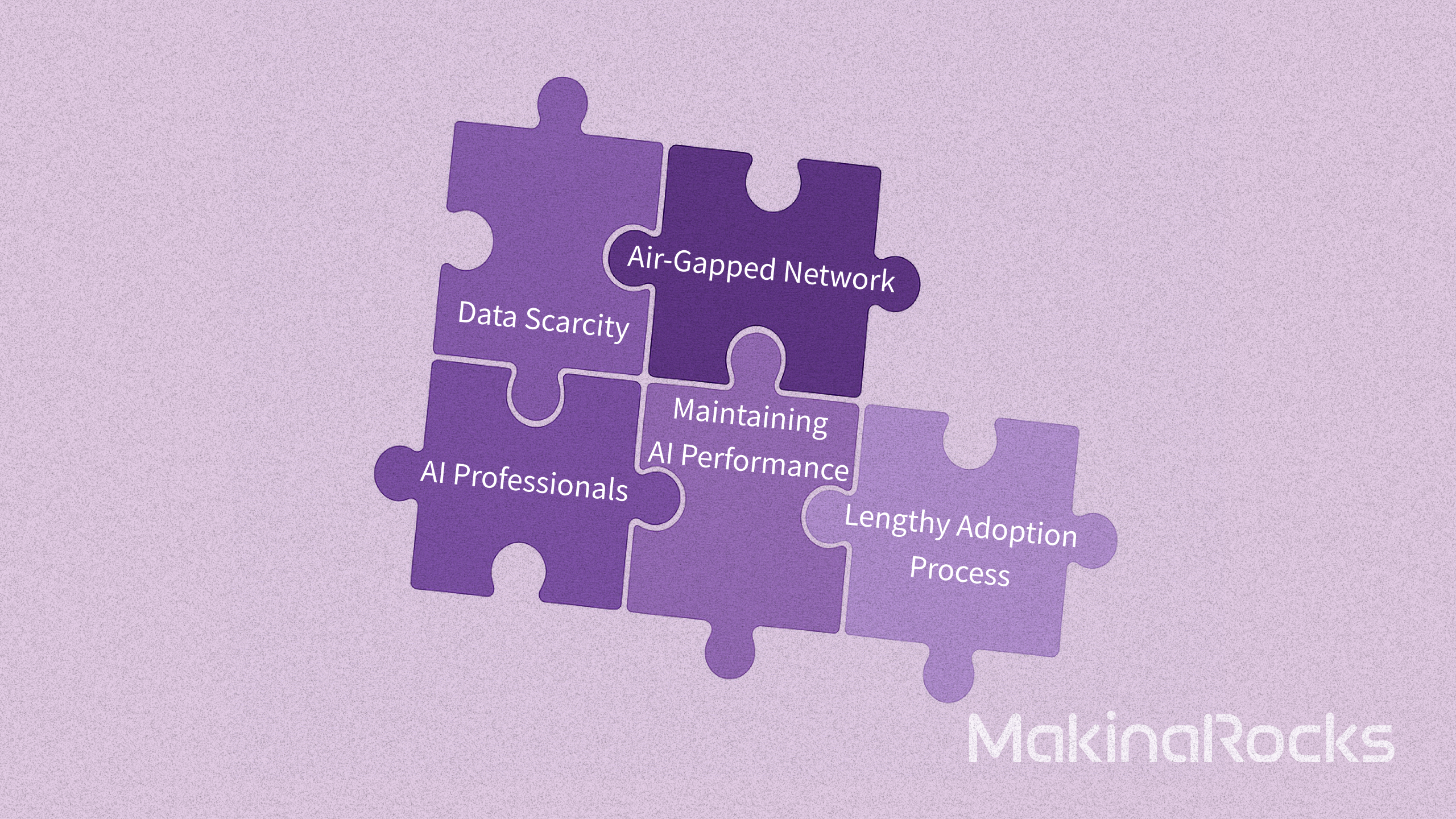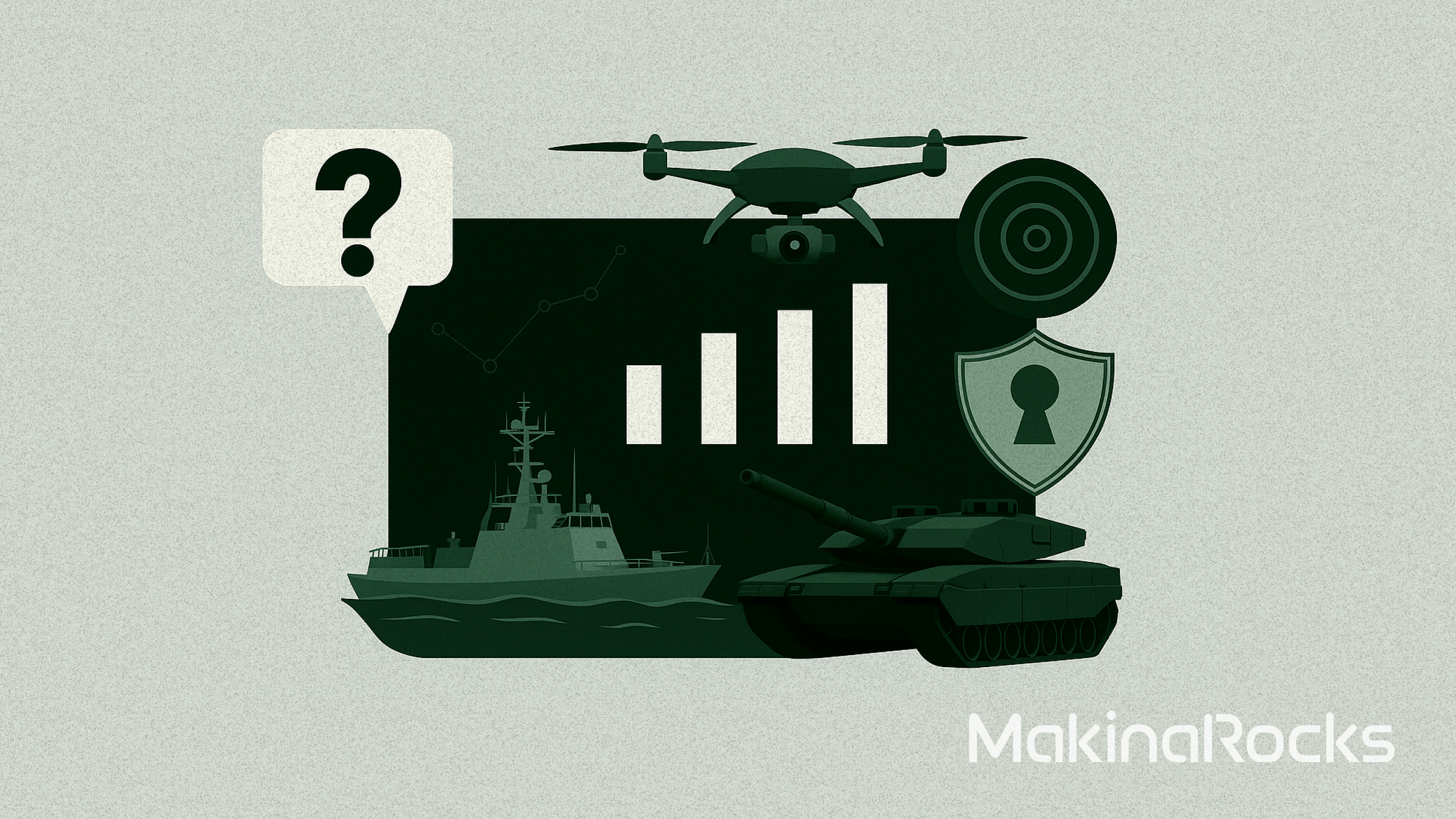It is now self-evident: the future of national defense cannot be discussed without AI. The Ministry of National Defense has already announced its AI-based battlefield command strategy under “Defense Innovation 4.0,” centered on manned-unmanned integrated systems.
But recognition is not adoption. Defense AI runs into walls at every turn:
- Acquisition cycles that average 14 years
- Data that is locked away, yet still insufficient
- Models that decay the moment they meet reality
- Expertise and infrastructure that remain scarce
Together with MakinaRocks’ defense AI experts, we examined these barriers — and the solutions required to overcome them.
Acquisition moves in years. AI moves in days.
The first wall is time itself. In defense, three years is considered fast. Most acquisition programs stretch a decade — sometimes 15 years. By contrast, AI evolves daily. A requirement raised today may be cutting-edge. By the time it is deployed, it risks being obsolete. Pilot programs for “rapid acquisition” are underway, but they remain outpaced by AI’s velocity. Unless acquisition is reimagined, defense AI will always arrive late to the fight.
Locked data: AI behind the wire
Few domains demand security like defense. Surveillance video, log files, reconnaissance imagery — nearly all are automatically classified as military secretes. Such data can only be handled in closed, on-premise networks with rigid security chains. A forward reconnaissance clip showing enemy movement, for example, is instantly locked within classified workflows. The barrier is not only access. It is also infrastructure: guidelines are often unclear, preventing experimentation and delaying deployment.
The data drought of peacetime
Defense AI’s most distinctive challenge is data itself. High-performance AI requires training on battlefield datasets — enemy deployments, weapon systems, operational patterns. Yet in peacetime, this data is nearly impossible to obtain. And when it does exist, it is tightly classified. The truth is stark: most meaningful data is generated only during war. Defense AI must be built with limited fuel and updated the moment new data arrives.
Learn or fail: Why static models die on the battlefield
An AI model trained once cannot survive combat. Battlefields are dynamic: formation shifts, tactics evolve, environments change by the minute. In such conditions, continuous learning is not optional — it is survival. Defense systems must be able to retrain in real time, integrating fresh data to remain relevant. This requires not just infrastructure, but a cultural shift: budgets, processes, and doctrine that embrace constant model evolution.
The talent and hardware gap
Even with the right strategy, do militaries have the people and platforms required? Defense AI demands data engineers, machine-learning specialists, and software developers. Few armed forces have structured programs to cultivate such talent, and field units rarely provide real-world experience. Meanwhile, the infrastructure to train and operate advanced models — GPU clusters, secure data centers — demands cost, expertise, and long-term commitment. The gap is clear: talent and infrastructure must advance together.
From challenge to solution
So how do you build AI for a battlefield where data is scarce, security is absolute, and timelines are broken?
You start differently.
‘Don’t wait for a perfect AI model—deploy it, and let real-world data refine it.’
This is the strategy MakinaRocks recommends. Instead of waiting for perfect data or flawless accuracy, build an initial AI model, deploy it, and retrain continuously as field data arrives. The approach ensures that AI remains current even across lengthy acquisition cycles — while naturally addressing the twin challenges of data scarcity and security.
A real-world lesson proves the point:
“In the early stages of the Ukraine war, object-detection AI designed to identify enemy equipment performed with low accuracy. As the conflict progressed, data accumulated. The AI retrained. Over time, it evolved into a high-precision system capable of detecting even small drones.”
Defense AI demands more than models. It requires a platform designed for the battlefield’s realities: operating inside closed networks, retraining the instant conditions change, and delivering tools that even non-technical operators can trust. Just as important, it must be informed by veteran insight grounded in real operational experience. MakinaRocks’ Runway was built for these constraints. It automates the entire AI lifecycle, even in restricted environments, retraining the moment new field data is collected. Runway also provides a simple, intuitive interface that makes AI usable for defense experts, while our veteran-led team ensures strategies reflect the realities of missions and system architectures. MakinaRocks builds AI that is secure, adaptable, and mission-ready. With Runway and our defense AI team, we turn defense AI from concept to reality.
Learn more in our post: 🔗 Why We’re Focusing on Defense AI — and What It Means
Note: This post was translated from the original Korean version by Kyoungyeon Kim.




